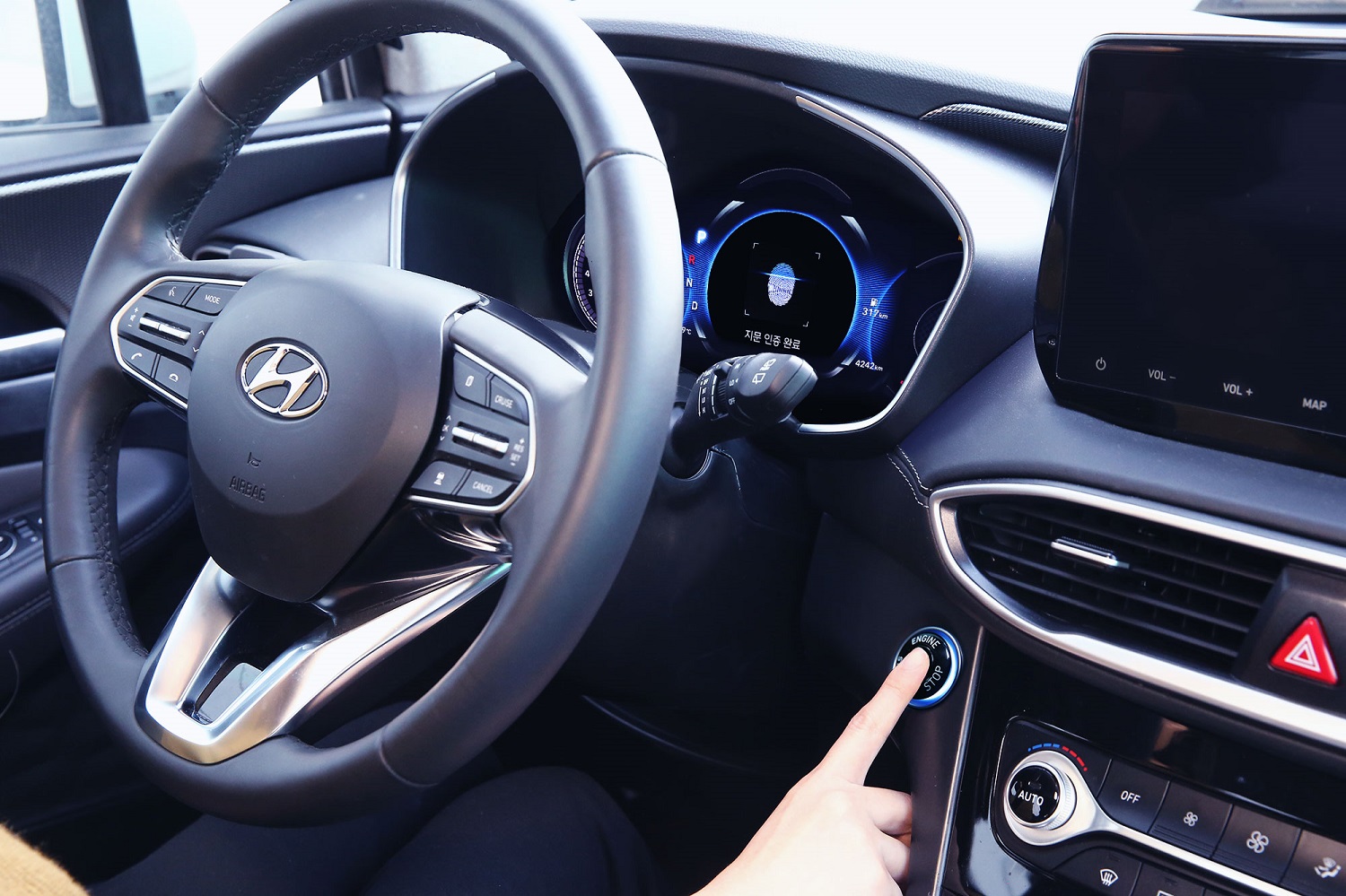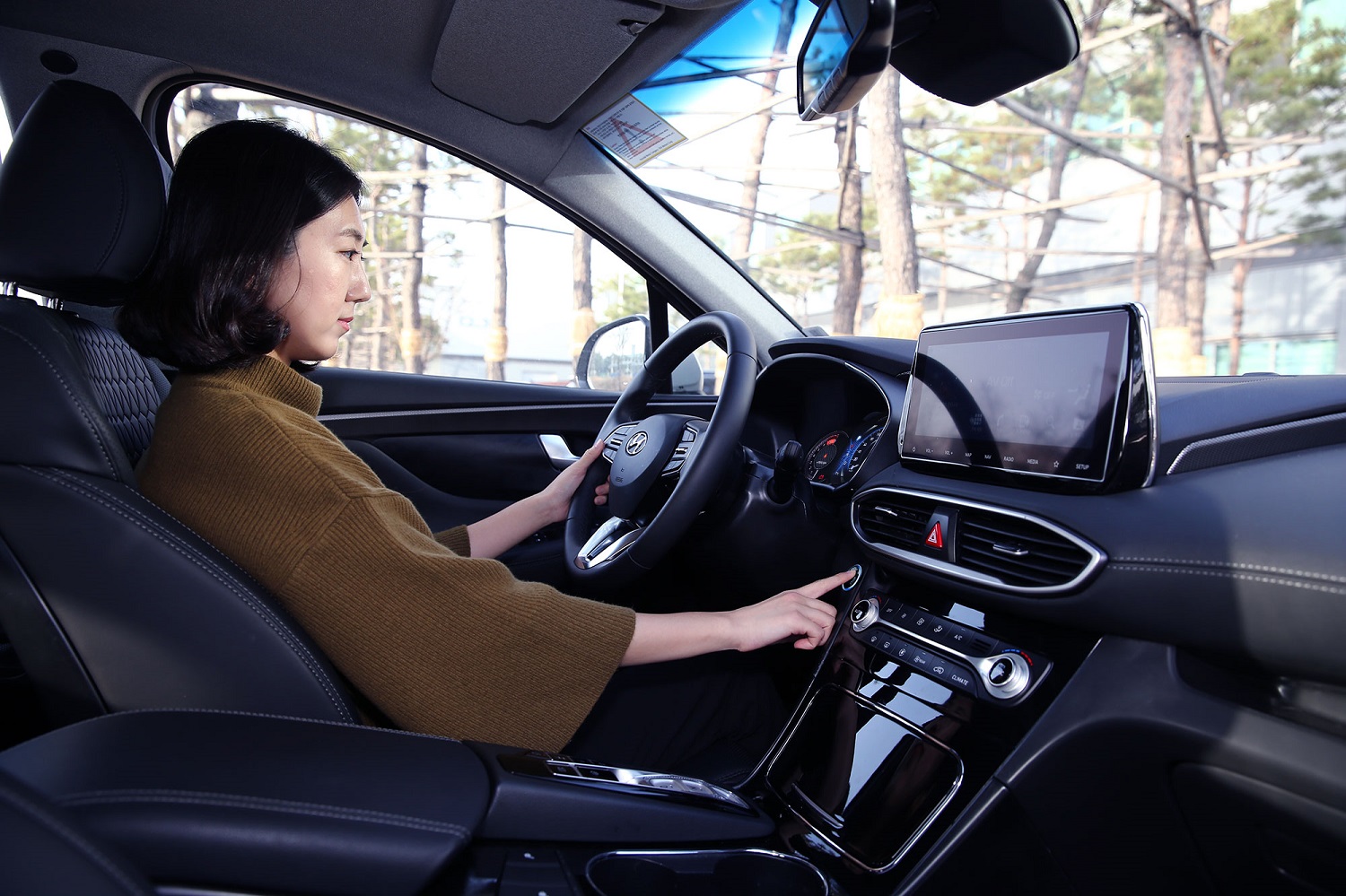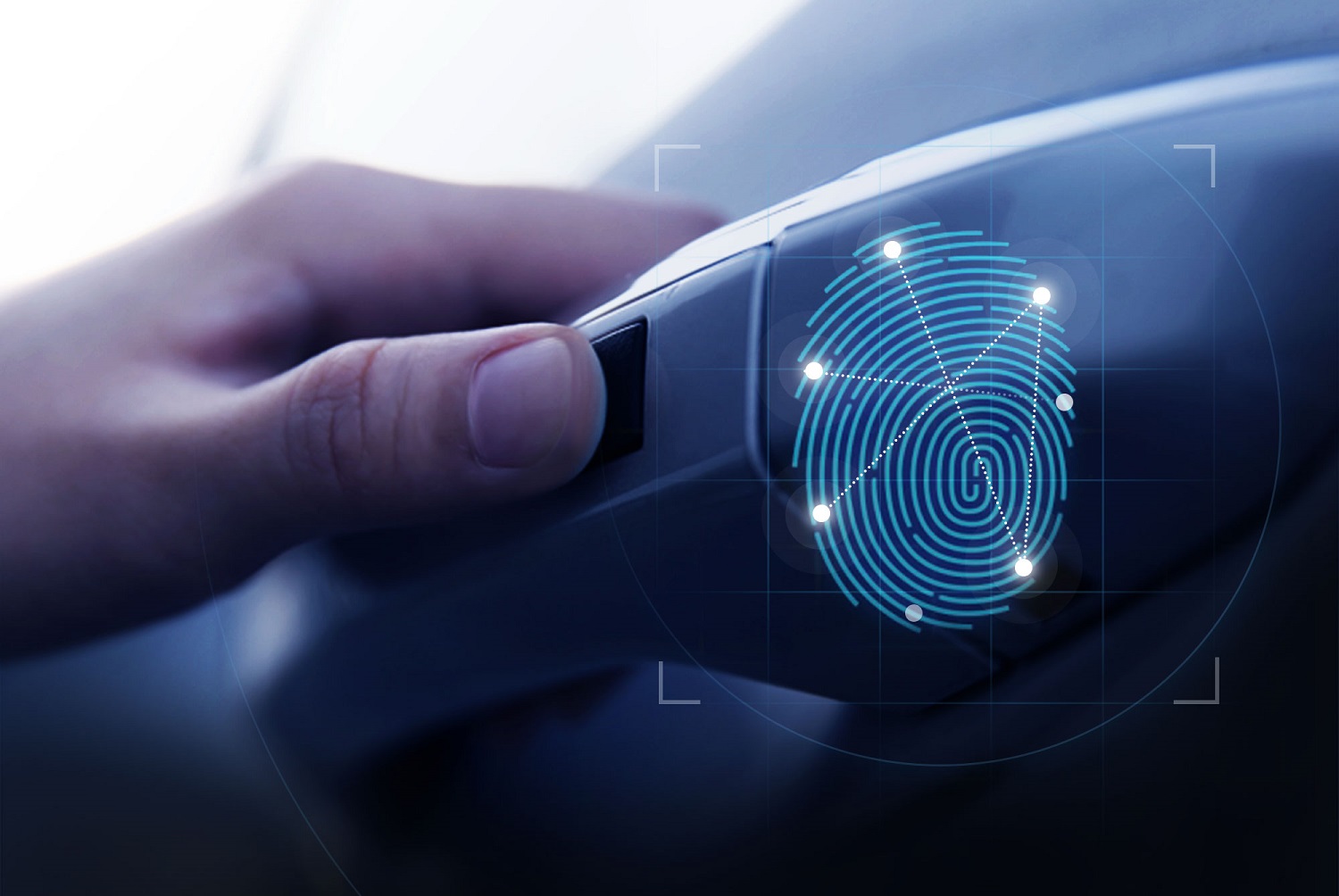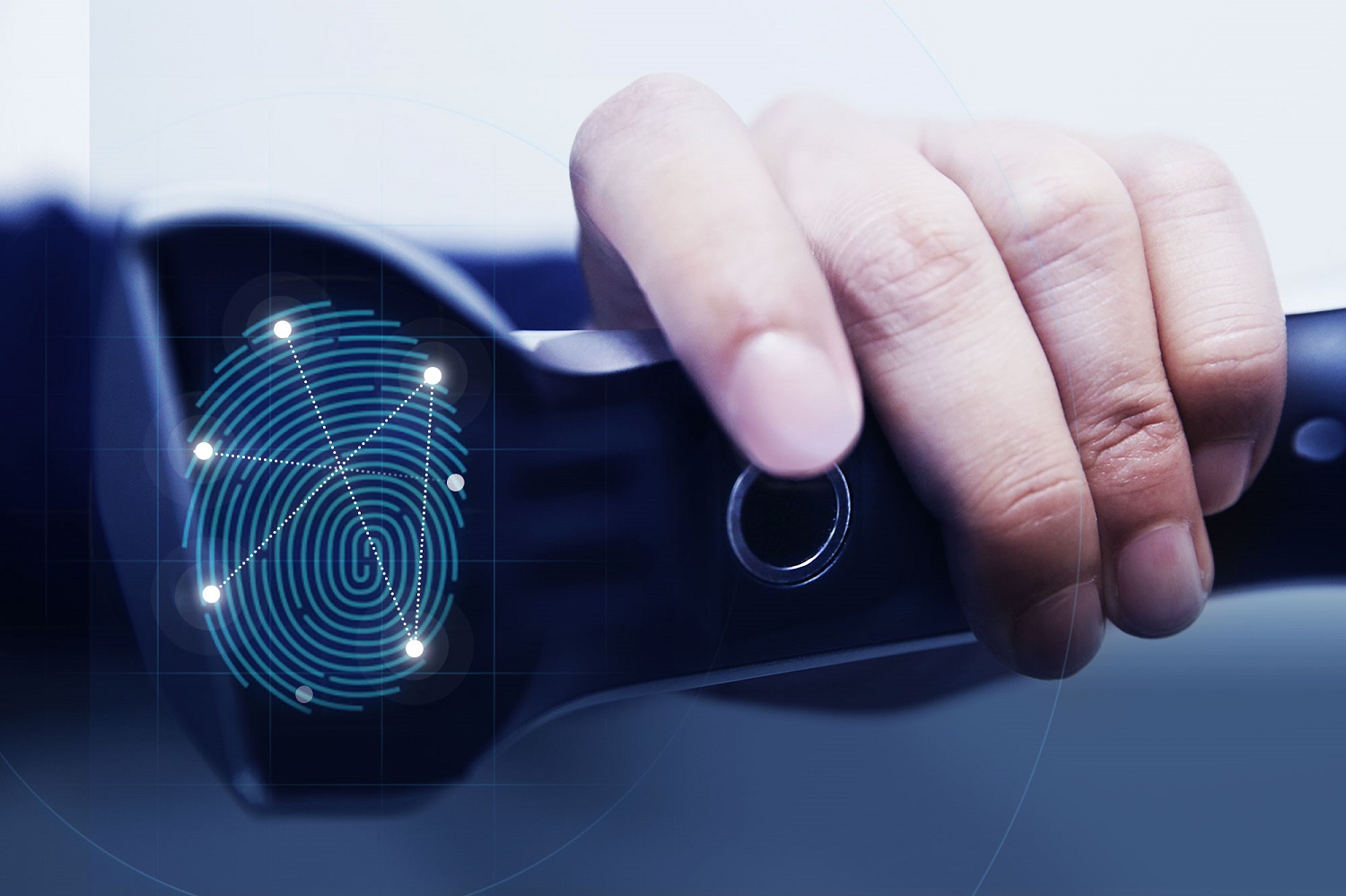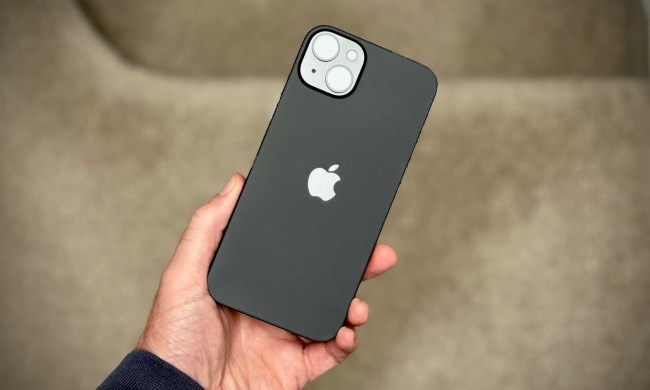In the smartphone world, Apple arguably democratized fingerprint-sensing technology when it released the iPhone 5S with Touch ID in 2013. The feature has spread to many other devices since, but it’s barely making its debut on a series-produced car. Hyundai announced the Santa Fe will be available with a fingerprint sensor in select markets (including the United States) starting in 2019.
Touch ID-style fingerprint-sensing technology will let owners lock or unlock the SUV’s doors and start its engine. If you can unlock an iPhone, you will be able to unlock the Santa Fe. Hyundai explains that, after setting up the feature, the driver simply needs to touch a small sensor integrated into the car’s door handle and wait for the system to scan his or her fingerprints. The fingerprint controller installed in the car unlocks the doors if it recognizes the driver. The process for starting the car is similar, but the sensor is located on the ignition switch.
Don’t worry about someone stealing your fingerprints. Hyundai’s technology boasts capacitance recognition, which detects differences in the electricity level of various parts of the fingertip. This prevents a thief from unlocking the car armed solely with a paper copy of the owner’s fingerprints; they’d need to be armed with the actual finger to access the car. And, the company promises its technology has a one in 50,000 chance of letting someone other than the owner into the car. Another person could, theoretically, unlock the car, but it’s easier to hack into a smart key than into the Santa Fe’s fingerprint-reading system, according to Hyundai.
The South Korean firm developed a dynamic update system that makes the scanner faster and more accurate over time. At launch, the driver’s fingerprints will only interact with the door locks and the ignition. Later on, as the technology improves, Hyundai will use it in other areas in a bid to make its cars more convenient. It will even allow different drivers to access an individualized profile that stores their seat position, climate control, and media preferences.
“In the future, Hyundai Motor plans to further expand the application of the technology to allow the adjustment of temperature, steering wheel position, and many other features which will be tailored to driver’s preferences. This will ultimately offer quality driving experience to each and every Hyundai customer,” Albert Biermann, the head of the company’s research and development division, said in a statement.
Hyundai will announce additional details about the Santa Fe’s fingerprint-sensing technology closer to the feature’s market launch. The firm hasn’t released its expansion plans yet, but it’s reasonable to assume the sensor will spread to other members of its lineup in the coming years.
